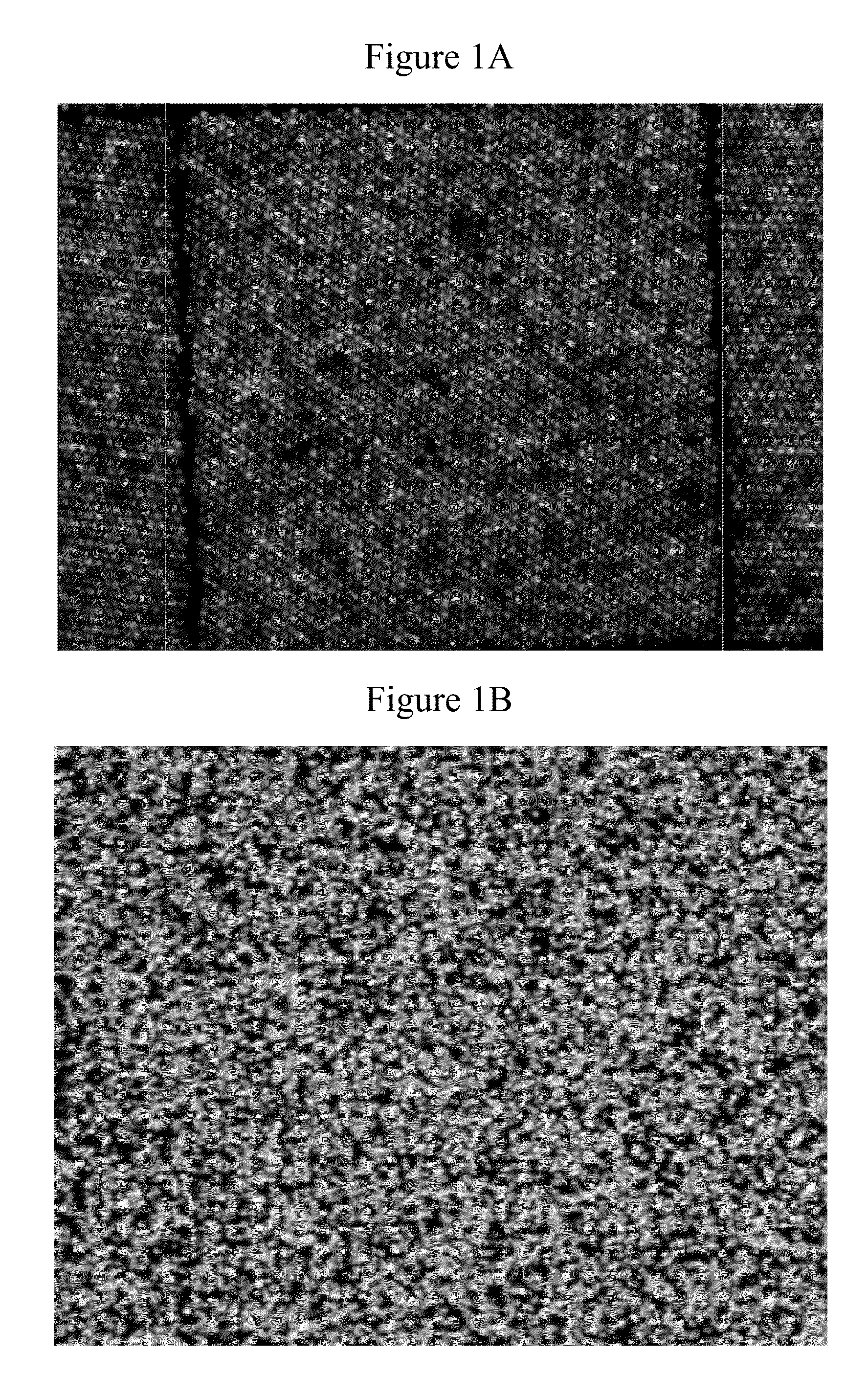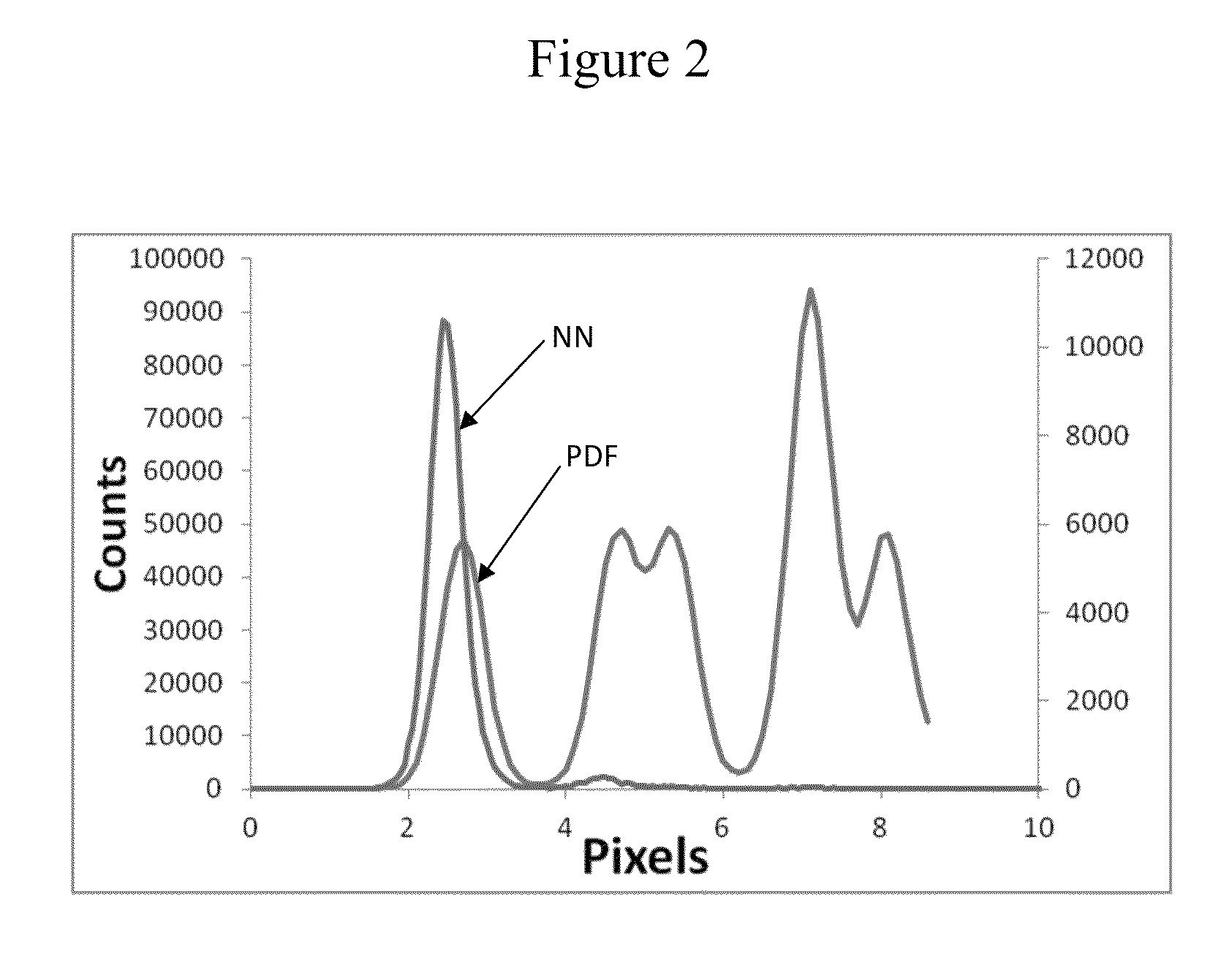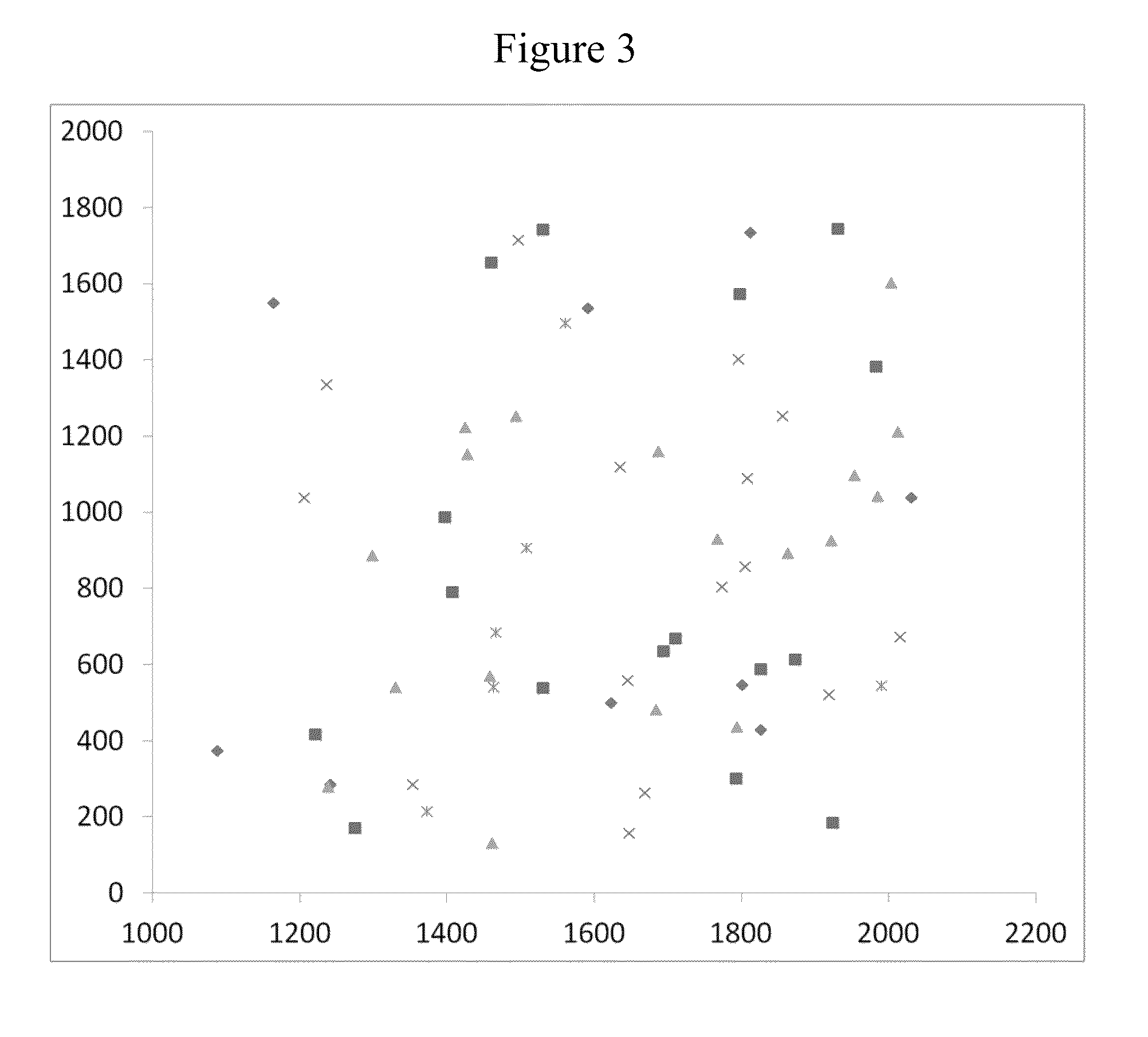Kinetic exclusion amplification of nucleic acid libraries
a nucleic acid library and exclusion technology, applied in the field of molecular biology, can solve the problems of high error rate, limited clinical and diagnostic application of appropriate genetic tests, and inability to find appropriate genetic tests
- Summary
- Abstract
- Description
- Claims
- Application Information
AI Technical Summary
Benefits of technology
Problems solved by technology
Method used
Image
Examples
example i
Super-Poisson Formation of Cluster Arrays on Flow Cells
[0132]This example describes a method to achieve super-Poisson formation of a cluster array on a flow cell for an Illumina (San Diego, Calif.) sequencing platform. The method described here is a process to capture a library element (e.g. a genome fragment) on a feature and to simultaneously clonally amplify the library element. A key feature of the process in this example is to control the rate of capture vs. the rate of amplification and to do so in a homogenous process. Many prior processes developed for high density seeding of Illumina flow cells, separate the capture of the library element from the clonal amplification process. In this example, the capture event initiates a clonal amplification event on the feature.
[0133]A patterned flow cell is prepared as follows. Glass flow-cells (Illumina, Inc., San Diego, Calif.) are coated with gold patches using a lift-off approach. Briefly, a photoresist layer is evenly coated over t...
example ii
Characterization of Patterned Cluster Arrays Created Under Kinetic Exclusion Conditions
[0137]This example demonstrates super Poisson loading of monoclonal clusters onto patterned features using kinetic exclusion conditions.
[0138]A patterned flow cell was prepared as follows. Glass flow-cells (Illumina, Inc., San Diego, Calif.) were coated with gold pads using a lift-off approach as described in U.S. Ser. No. 13 / 492,661, which is incorporated herein by reference. Briefly, a photoresist layer was evenly coated over the surface of the glass flow-cell and patches of the photoresist were removed by photolithography to expose patches of the glass surface. A layer of gold was then deposited on the surface to form a continuous thin film over the photoresist regions and glass patches. Gold was deposited using e-beam evaporation as set forth in Thornton, Ann. Rev. Mater. Sci. 7:239-60 (1977), which is incorporated herein by reference. The photoresist layer was then removed by Acetone lift off...
example iii
Active Electrical Desorption and Patterning of Biomolecules
[0144]This example demonstrates a method to spatially pattern biomolecules using electric fields. The methods described in this example rapidly seed DNA at target sites and electrochemically repel biomolecules from interstitial regions, resulting in highly patterned, addressable arrays of DNA clusters. The results shown here demonstrate the formation of flow cells having patterns of monoclonal nucleic acid clusters.
[0145]The method described in this example employs an electrical potential applied across one conductive surface and an electrolyte or across two conductive surfaces to actively desorb either physadsorbed or chemically conjugated molecules from one or both of the electrically biased surfaces. This active desorption method does not require any surface chemistry / surface modification, can desorb molecules very quickly (less than 5 minutes) and is less sensitive to process conditions than passive desorption methods. T...
PUM
| Property | Measurement | Unit |
|---|---|---|
| diameter | aaaaa | aaaaa |
| area | aaaaa | aaaaa |
| area | aaaaa | aaaaa |
Abstract
Description
Claims
Application Information
 Login to View More
Login to View More - R&D
- Intellectual Property
- Life Sciences
- Materials
- Tech Scout
- Unparalleled Data Quality
- Higher Quality Content
- 60% Fewer Hallucinations
Browse by: Latest US Patents, China's latest patents, Technical Efficacy Thesaurus, Application Domain, Technology Topic, Popular Technical Reports.
© 2025 PatSnap. All rights reserved.Legal|Privacy policy|Modern Slavery Act Transparency Statement|Sitemap|About US| Contact US: help@patsnap.com



